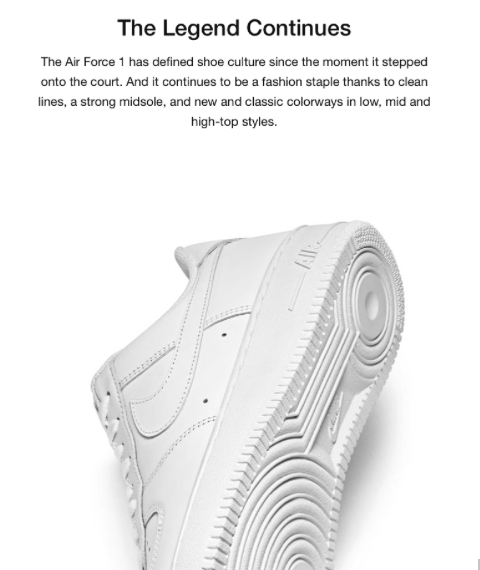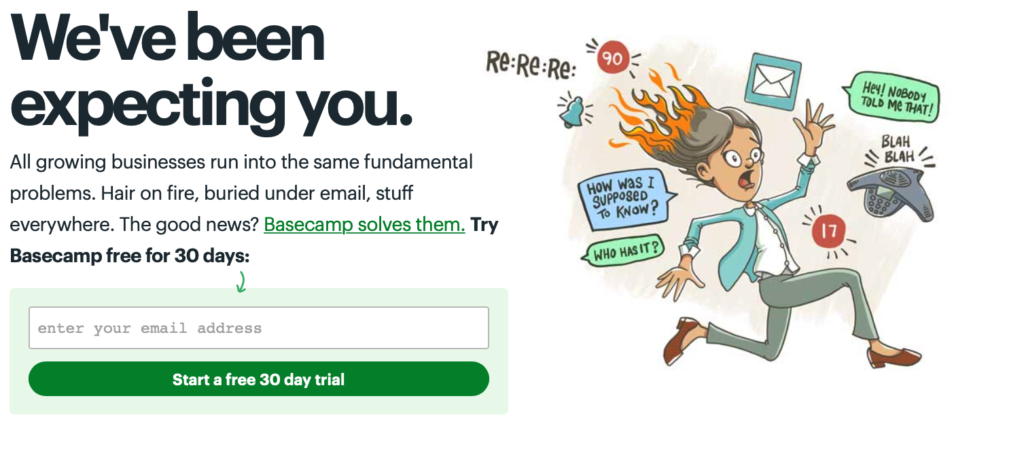
It doesn’t matter what industry you’re in, copywriting is going to be key to your business success. Specifically, your digital copy (sales pages, homepage, blog posts, etc.).
According to Pew Research, 81% of Americans go online on a daily basis, enabling businesses to expand out of their local markets. Your sales now hinge on your ability to grab your audience’s attention and make them feel understood.
So what is copywriting exactly and how can you improve yours? We’ll explain just that.
What is Copywriting? Why Does It matter?
Quite simply, copy is nothing more than the words you use. I like how Founder & CEO of Conscious Copy & Co, Jennifer Huyde’s defines it: “Copy is words that sell.”
The goal of copywriting is ultimately to persuade individuals to take action. It could be to buy your products and services or it could simply be to get people to sign up for your newsletter. No matter what action you want your prospective customers to take, copywriting is the bridge to get them there.
Author and entrepreneur Marie Forleo eloquently says, “The right words can move mountains.” The right words show your customer what you and your business stand for. The right words connect to your ideal clients so that they feel understood. The right words lead to more revenue and more delighted customers.
All great copy has three elements. Let’s dive in.
1. Is It Clear?
Has anybody ever asked you to “Explain it to me like I’m six”? Meaning, eliminate all the fluff and break it down into its simplest form. Sometimes this can be more difficult to do because it requires to get to the point quickly.
This is what it means to be clear. There’s a saying in copywriting that says “Be clear over clever.” When writing your copy, aim to be direct and bold. Say exactly what you mean. We tend to use too many words. Words that are useless, redundant or filler words (i.e. kind of, sort of, really, fairly, pretty, etc.)
You don’t have to be long-winded to be powerful.
Martin Luther King Jr.’s I Have a Dream speech is only 1,667 words. The Declaration of Independence has even less (1,337). Both The Gettysburg Address and Lou Gehrig’s farewell speech contain a mere 272 words.
What is it exactly that you are trying to communicate? What do you want your customer to do? What’s the single idea you want them to understand?
When you can answer these questions, you’ll know that you’re clear.
2. Is It Human?
When writing copy, many organizations make the mistake of speaking to their peers instead of their customers. They use industry jargon (ecommerce solutions, targetable scale, etc.) and hyperbole (revolutionary, amazing, the only one) instead of language that two human beings would use over a cup of coffee.
Good copywriting should read like a conversation. Sure, maybe a more formal conversation if that’s your brand voice, but a conversation nonetheless.
Look at this example from Nike:

See how they use language that their customers actually use (“..stepped on the court.”)?
Or look at this one from the project management tool Basecamp:

It feels like a real human being is talking to me. Perhaps even a friend. This is what it means to sound human. When you start to sound like a human, your customers will feel more connected to your brand.
3. Do You Show That You Understand?
Have you ever been around a stereotypical used car salesman? He’s sitting there with his grease-backed hair, seemingly saying all the right things. He’s very clear and articulate (#1 above). He uses all words that you would use (#2 above). Yet you just feel like there’s something not right about him. Like he’s not truly listening to you, so you head home and take a shower instead of purchasing a 2003 Chevy Malibu.
This is where the last element of effective copy comes in. Do you truly understand your customer? Do you know what their pains are? Their desires? Hopes? Dreams?
If not, they won’t buy from you.
Customers (no matter if they care to admit it) make purchasing decisions based on emotion, not logic. If they feel understood, they will be driven to pull out their credit card.
Does your copy include the exact wording that your customers use when they talk about their problems? Does it paint a picture of their current situation?
You’ll know you have powerful copy when you hear a customer say, “I couldn’t have said it better myself.”
So next time you sit down to write a sales page or an email, ask yourself:
- What do I want them to do?
- Am I saying exactly what I mean?
- Does this sound like a robot or a human?
- Am I addressing my customers problems? Am I using their language?
Just answering these questions will separate your copy from your competitors, and have customers who feel heard, understood, and most importantly, take action.